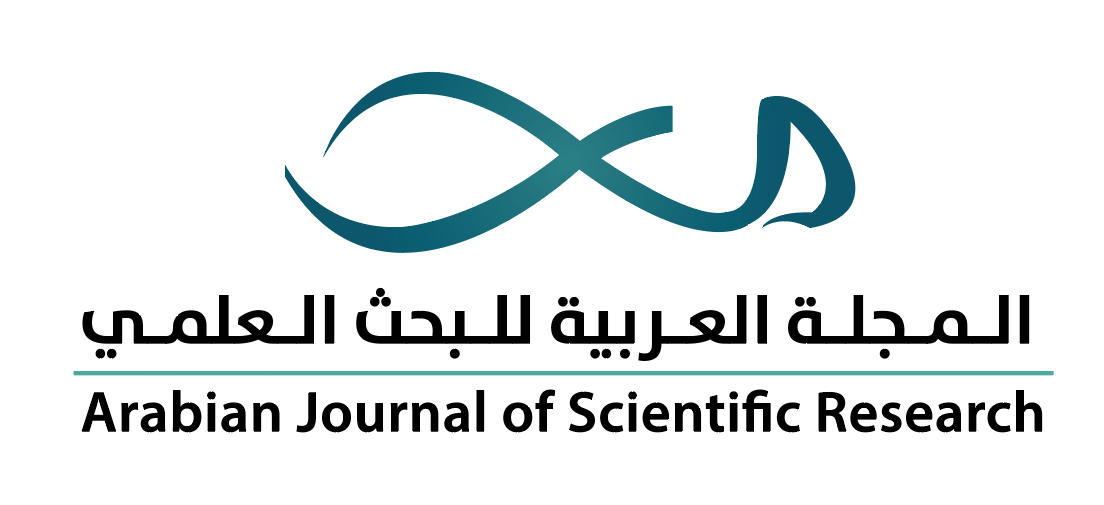-
oa تصنيع أغشية متقدمة من خليط أكسيد الغرافين المعالج والبولي سيلفون واستخدامها في معالجة المياه الملوثة بالزيوت العضوية
- Source: Arabian Journal of Scientific Research-المجلة العربية للبحث العلمي, Volume 1(2020), Issue 2, Nov 2020,
-
- 20 October 2020
- 29 October 2020
- 15 November 2020
Abstract
الملخص
يمكن أن تمثل المعالجة السليمة لمياه الصرف الصناعي مصدرًا مهمًا للمياه العذبة التي يمكن إعادة استخدامها في العديد من تطبيقات المياه. على سبيل المثال، تعد تكنولوجيا الأغشية قادرة على القيام بمعالجة فعالة لتقليل محتوى الزيت في مياه الصرف الصناعي إلى مستوى مقبول. وتتمتع الأغشية البوليمرية التجارية الحالية بسهولة التصنيع وكفاءة فصل الزيت، ولكنها تعاني من تدهور الأداء مع الوقت والانسداد السريع. في هذه الورقة البحثية، نستعرض تصميم وتصنيع أغشيةٍ للترشيح الفائق تتكون من خليط البولي سيلفون وتركيزات قليلة من أكسيد الغرافين المعالج، واختبار هذه الأغشية في فصل الزيت من مياه الصرف الصناعي. في البداية، قمنا بمعالجة أكسيد الغرافين بمركبات عضوية تحتوي على المجموعات الأمينية والكربوكسيلية العضوية، وتم فحص التركيب الهيكلي ومكونات أكسيد الغرافين المعالج بواسطة المجهر الإلكتروني الماسح (SEM) المشتمل على مطيافية الأشعة السينية المشتتة للطاقة (EDX). وبعد ذلك، تم تصنيع عدد من أغشية مختلطة تحتوي على كميات قليلة من أكسيد الغرافين بما يعادل 0.05%، 0.1%، 0.2%، 0.4%، 0.8% بالوزن من كمية البولي سيلفون باستخدام تقنية الانقلاب الطوري (Phase Inversion). وقد أظهرت الأغشية المحتوية على أكسيد الغرافين المعالج قدرة عالية على التخلص من الزيت وخصائص ميكانيكية ممتازة مقارنة بالأغشية المصنعة من مادة البولي سيلفون فقط. كما توصلنا إلى أن كمية أكسيد الغرافين المعالج بالأغشية تؤثر بشكل كبير في خصائصها من معدل تدفق المياه خلالها، والتخلص من الزيت، ومقاومة ترسب المادة العضوية والبيولوجية على سطحها. كما توصلنا إلى أن التركيز المثالي من أكسيد الغرافين المعالج يتراوح بين 0.1-0.2% من وزن البولي سيلفون. وبما أن هذا المقدار الضئيل من أكسيد الغرافين المعالج لا يؤثر في تكلفة تصنيع الأغشية، ولا يغير من خصائص اللزوجة لمحلول خليط أكسيد الغرافين المعالج مع البولي سيلفون، فإنه لا يتطلب تغيير عملية التصنيع التجارية الحالية. في الختام، تشير نتائج الدراسة إلى أن الأغشية التي تحتوي على أكسيد الغرافين المعالج هي أغشية واعدة جدًا للاستخدام في عمليات معالجة المياه كفصل الزيت من الماء ويمكن أن تكون بمنزلة أساس للمعالجة المتقدمة لتيارات مياه الصرف الصناعي.
Proper treatment of oily wastewater streams can constitute a reusable water source. Membrane technology can provide an efficient treatment process to reduce the oil content in the water stream to an acceptable level. Current commercial polymeric membranes combine ease of fabrication and separation efficiency but suffer from bio and organic fouling. In this paper, we discuss the design, fabrication, characterization, and testing of ultrafiltration (UF) mixed matrix membranes (MMM) for separation of water-oil emulsion by incorporation of small concentrations of functionalized graphene oxide (fGO) into polysulfone (PS) matrix. fGO is synthesized by functionalizing graphene oxide (GO) with amine and carboxylic groups, and the functionalization was confirmed EDX. Subsequently, the PS-MMMs containing 0, 0.05, 0.1, 0.2, 0.4, and 0.8 wt.% of fGO were fabricated via phase inversion process. The fabricated membrane showed enhanced hydrophilicity and mechanical properties compared to the pristine PS membrane. The loading of f-GO in the MMMs dictates the membrane hydrophilicity and separation performance with low f-GO loading of 0.1 - 0.2 wt.% demonstrating the biggest improvement in water flux, oil rejection, and biofouling resistance relative to the pristine PS membrane. This low concertation does not impact the cost of the membrane nor the rheological properties of the PS-fGO solution and, therefore, does not require alteration of the current commercial fabrication process. In conclusion, our results indicate that MMMs based on functionalized graphene oxide are very promising for water oil separation and can serve as the basis of advanced treatment of oily wastewater streams.


